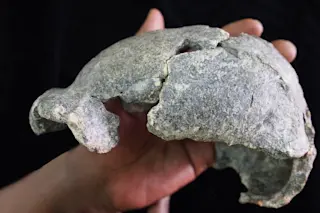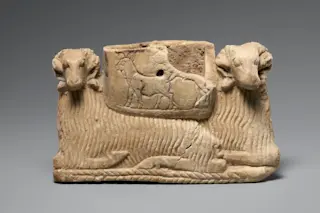On an archeological dig, finding remains from ancient, early humans is always somewhat surprising. Yet that initial thrill gets a serious boost when researchers unearth the smallest fossil found thus far from a particular species.
That’s exactly what happened when archeologists recently discovered the smallest known Homo erectus cranium in Africa. And the skull, recovered in Ethiopia, sat a few miles from where they also found a similar, larger skull with slightly sturdier features, according to a report published this week in Science Advances. Archaeologists working on this project think these two skulls both came from the same kind of early human, H. erectus, and indicate that the species showed distinct differences between the sexes.
Physical differences between males and females might speak to the early humans’ mating habits, writes study co-author Michael Rogers, an archaeologist with Southern Connecticut State University, in an email to Discover. This finding might revive ...














